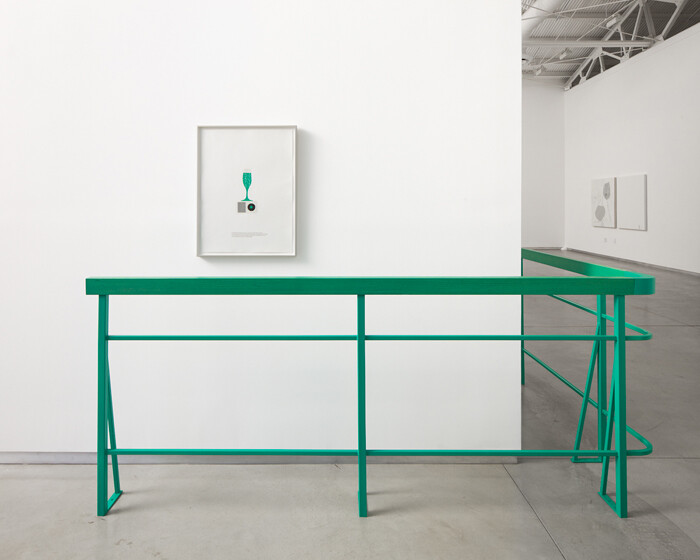Matthew Brannon's letterpress works felt delightfully and deceptively anachronistic in the early decade, resurrecting motifs of mid-century American advertising with pithy captions on the cosmopolitan set. Forged in the margins of ad copy and commodities, the artist's alter egos appeared forever prey to the doubts, inadequacies, and frustrations that even a glitzy, gin-soaked veneer can barely disguise. Little stretching was needed to see the resemblance these fast-lane phantasms bore to the confidence men of our own last, great bull market.
Over the five years since the artist's first solo show at David Kordansky, in Los Angeles, as the economy collapsed and Man Men renewed a decorative interest in Brannon's 1960s New York, I wondered how his artwork had registered the shocks, and if his Joneses were continuing to consume the new and the chic at a breakneck pace. His latest show, "Wit's End," provides a sober response. Visitors are corralled at the gallery entrance by Tour Guide (all works 2010), a teal railing fencing in a letterpress print of a champagne glass on a tipped over iPod that comes as an elegy for the fizzier days and a portent for those to come: "You should know this before you go in," the caption tells us, "I've moved some of the furniture around." Inside the gallery hang two other prints that are notably devoid of the lifestyle staples—sushi, tennis rackets, and stilettos—from the artist's earlier works. Brannon's characters still enjoy a nice steak dinner, as in Loss of Words, but the evidence is in the empty restaurant checks and monologue by a character choking on her meal; or, with Accounting, in a narrative ("how she came to have his dick in her mouth") accompanied by a set of receipts and laundry list of everyday asides. The White House print lacks textual backup, an omission that lends as tellingly to Brannon's editorial—like installation as do the represented signs of scrimping and saving.
Language constellates the other works in jerks and halts ambiguously borne from an incapacity or unwillingness of the artist and his characters to speak: a feared futility in the semantic faculty that manifests, compensatorily, in Brannon's bolstering works with deadpan literary titles (Dust Jacket, Title & The Spine Underneath); or by collages of stretched canvas and linen grounds with cut canvas renderings of painterly supports like rulers and stretcher bars; and by making an unprecedented series of brushy, floral oils, many of which crib credibility by hanging, like pendant portraits, beside the reflexive, cut canvas works. As far as provocations of a banal nature go, these florals offer a quick return on Brannon's once-stated wish to be "a radical version of a conservative," which is to say that they appear as collectibles that could easily suit any office wall. They gain something from an accompanying set of floral ink drawings, each given the figural ascription of Prostitute and made to hang around a record of a gagging woman (Gag). A quote from Bataille's "The Pineal Eye" lines the LP sleeve, describing the evolution of the head of the erect human into a flower-like, excretory orifice. Yet even as he sketches the contours of a markedly cynical worldview, Brannon remains a softer, lighter and impossibly elegant melancholic.







